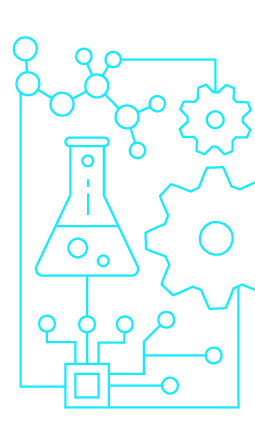|
|
|
| Module code: MAB-5.9 |
|
6V+1P (7 hours per week) |
|
8 |
| Semester: 5 |
| Mandatory course: yes |
Language of instruction:
German |
Assessment:
Written exam
[updated 12.09.2004]
|
MAB-5.9 Mechanical and Process Engineering, Bachelor, ASPO 01.10.2004
, semester 5, mandatory course
|
105 class hours (= 78.75 clock hours) over a 15-week period.
The total student study time is 240 hours (equivalent to 8 ECTS credits).
There are therefore 161.25 hours available for class preparation and follow-up work and exam preparation.
|
Recommended prerequisites (modules):
None.
|
Recommended knowledge:
To be admitted to the written examination, students must have completed the lab course work
[updated 17.08.2012]
|
Recommended as prerequisite for:
|
Module coordinator:
Prof. Dr.-Ing. Horst Altgeld |
Lecturer:
Prof. Dr.-Ing. Horst Altgeld
Prof. Dr. Michael Reimann
[updated 17.08.2012]
|
Learning outcomes:
After completing this course, students will:
be acquainted with simple procedures for assessing energy demand.
have been introduced to a variety of energy converters and their corresponding conversion efficiencies.
be able to design simple heat exchangers and will have examined a heat exchanger in the laboratory to estimate its technical limits.
be acquainted with methods of supplying energy to buildings and industrial facilities.
be able to assess the application of combined heat and power generation from the point of view of efficiency, emission levels and economic viability.
understand the use of regenerative energy sources and learn how they can be used in combination with conventional methods of power supply.
be able to conduct and understand an energy balance analysis of a power converter.
[updated 12.09.2004]
|
Module content:
Methods for determining time-resolved energy demand requirements (fundamentals of energy demand analysis).
Power capacity, efficiency and operation of various systems for supplying heat and power, including regenerative systems such as thermal solar energy and biomass systems.
Selecting systems suitable for supplying energy to buildings and industrial facilities.
Benefits of combined heat and power (cogeneration) systems; computation of overall efficiency and evaluation of the economic viability of various systems using static and simple dynamic models.
Solar-based systems for supplying hot water, thermal power and process heat.
Perform and analyse the results of one or two suitable laboratory experiments to investigate the energy balance schemes of various converter systems (e.g. model heat exchanger, thermal power system, heat pump, small-scale cogeneration plant).
[updated 12.09.2004]
|
Teaching methods/Media:
Laboratory apparatus and models
[updated 12.09.2004]
|
Recommended or required reading:
Herbrik, R.: Energie- und Wärmetechnik, Teubner, Stuttgart.
Zahoransky, A.: Energietechnik, Vieweg.
Kaltschmitt, M. et al: Erneuerbare Energien, Springer
Kaltschmidt, M.et al: Energie aus Biomasse, Springer
Quaschning, V.: Regenerative Energiesysteme, Hanser
Khartchenko, N.V.: Thermische Solaranlagen, Springer
[updated 12.09.2004]
|


